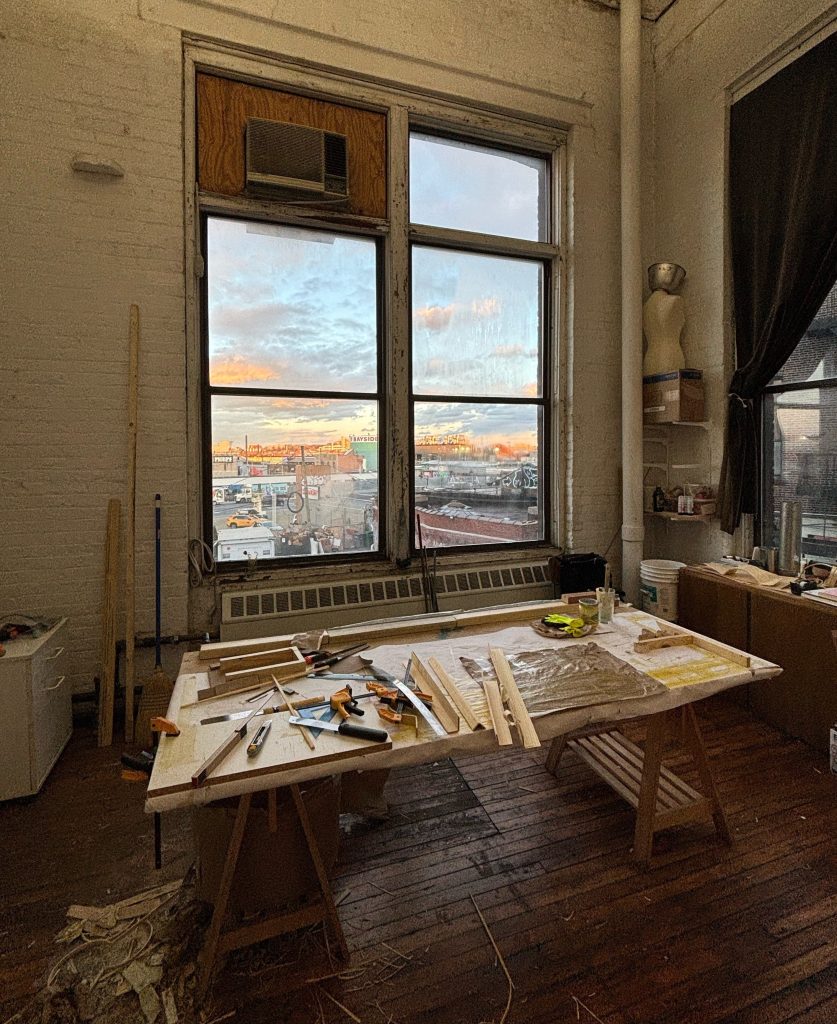Published:
A conversation with Tora Schultz, IASPIS resident at ISCP New York 2024
- Start Page
- News
- A conversation with Tora Schultz, IASPIS Artist in Residence at ISCP in New York
The Swedish Arts Grants Committee’s international program for visual artists and designers, IASPIS, collaborates with a range of residency programs around the world. One of these is the International Studio & Curatorial Program (ISCP), located in East Williamsburg, Brooklyn – a dynamic center offering a rich program of studio visits, field trips, open studios, artist talks, and exhibitions.
Through its residency initiatives, the Swedish Arts Grants Committee aims to support artists in their work, artistic development, and in establishing international networks. In 2024, Tora Schultz was the IASPIS artists in residence at ISCP. We sat down with her to discuss her experiences and reflections from her time in New York.
Let’s start with you just telling me your name, who you are and what your artistic practise is about in short?
My name is Tora Schultz and I am an artist. I primarily work with sculpture and with the function of everyday objects, as well as the hidden stories, languages, and design choices embedded within these items.
Could you describe what your studio setup looked like and how the residency looked and the atmosphere of it all?
The Swedish studio is a beautiful one—with high ceilings, wooden floors, and located in an old industrial building. It’s a fantastic studio with large windows. There are studios on all three floors, all occupied by artists from different parts of the world. There is a shared kitchen where everyone eats lunch. The atmosphere varies, especially if you’re there for a year, as people come and go. Some groups are very social, others less so, so the vibe changes a lot over time.
The area is called East Williamsburg that still has an industrial feel, although gentrification from nearby Bushwick is creeping closer, with small cafés opening on every corner. But there are still areas that remain industrial, where you can find materials.
And how many studios and residents do ISCP have?
There are approximately thirty to thirty-five studios. The first floor is for American or local artists, while the second and third floors are for international artists—around fifteen to twenty international residencies at the same time. ISCP organizes one studio visit per month, Open Studios three times a year, and one field trip per month. They also have an agreement with “Materials for the Arts,” a fantastic place where materials are donated and collected—everything from furniture to wood, old frames, and fabrics—which you can take for free. Every city should have a place like that.

Photo: Tora Schultz
View from the studio, ISCP.
How was your accommodation in New York?
The apartment is in the West Village – maybe the only time you can live there! It’s very well connected to the studio with the L train. An old New York apartment with charming character.
In what ways has your time at ISCP influenced your artistic expression?
My production method has changed and it has maybe evolved into a more adaptable way of working, which is fantastic for future residencies or new locations. I found an amazing welder who had a workshop near ISCP and we were able to build works together. I also found others with woodworking shops. This created a practical network in the city and gave me new ideas for production.
How was the interaction with other artists there and how did your network expand? What channels did you go into?
During my time at ISCP, I met so many amazing artists and curators, which naturally led to new collaborations and projects. The network in New York is, of course, international, so you meet people from all over the world, which gave me a broad perspective.
Are there specific exhibitions, galleries, or museums that made a strong impression on you?
I’ve seen many amazing exhibitions, compleatly overwhelming and beautiful experiences. But what has inspired me the most is the breadth of the cultural life: poetry, literature, cinemas, film programs, music scenes for experimental music, and various exhibition formats. It’s a generous cultural landscape, with young initiatives and a wide span of generations across all fields—truly inspiring.
If you look back at yourself as an artist before the residency, what would you say is the biggest difference now?
The perspective! And poetry has become a major part of my experience in New York—experiencing the city through literature and powerful voices from different time periods within the same city.

